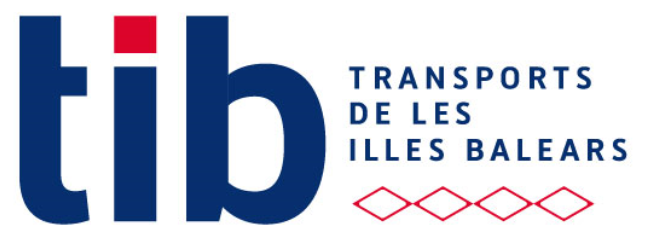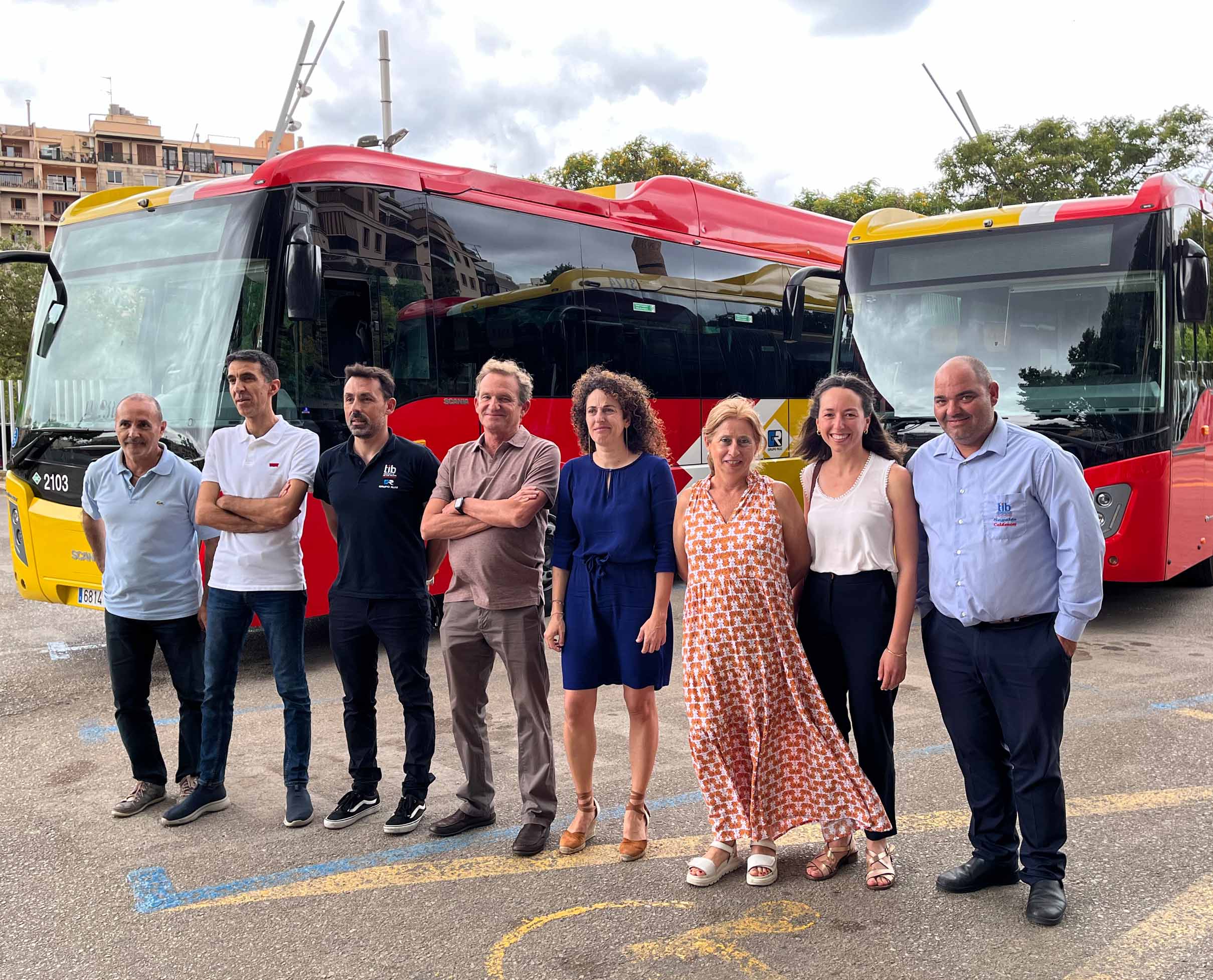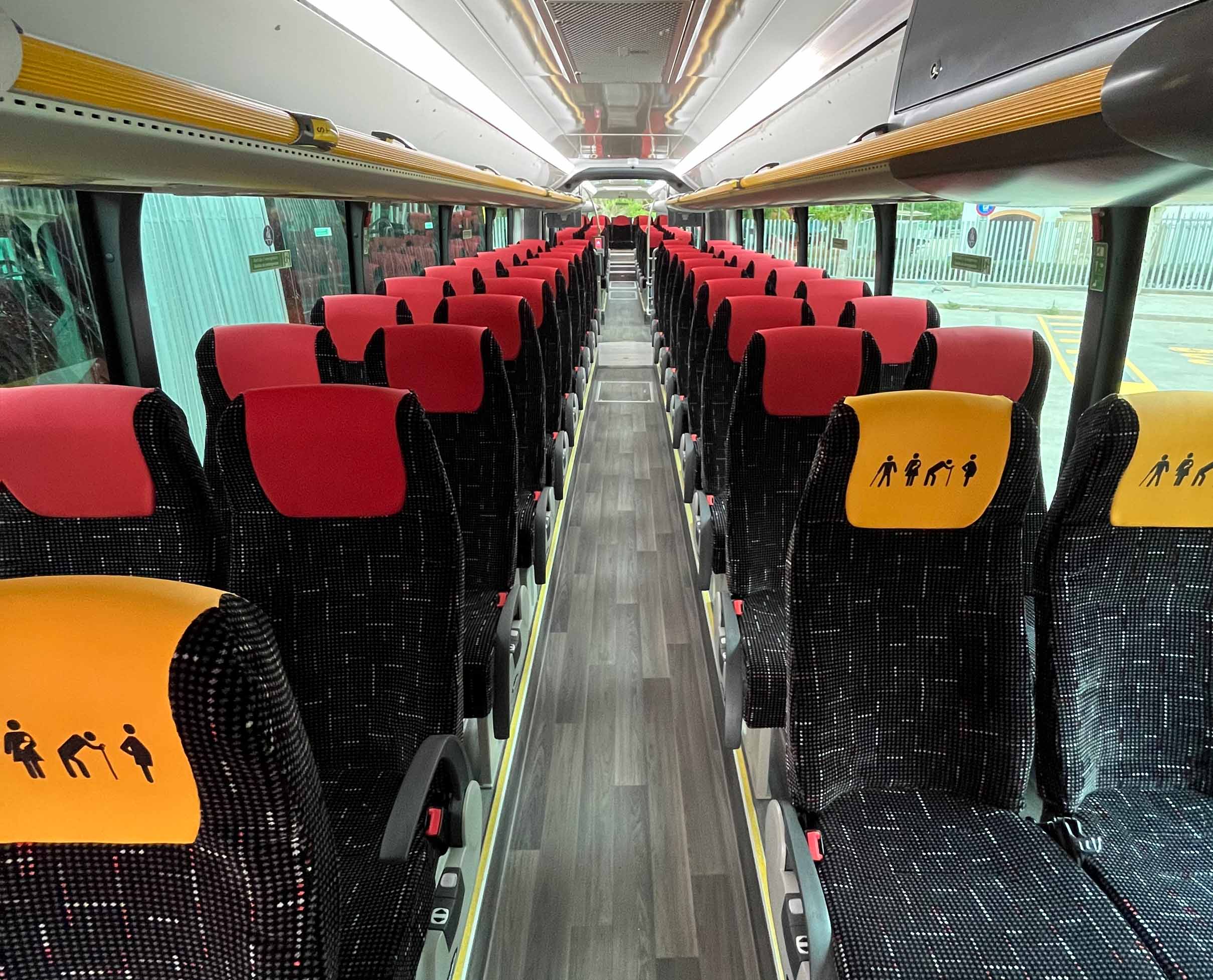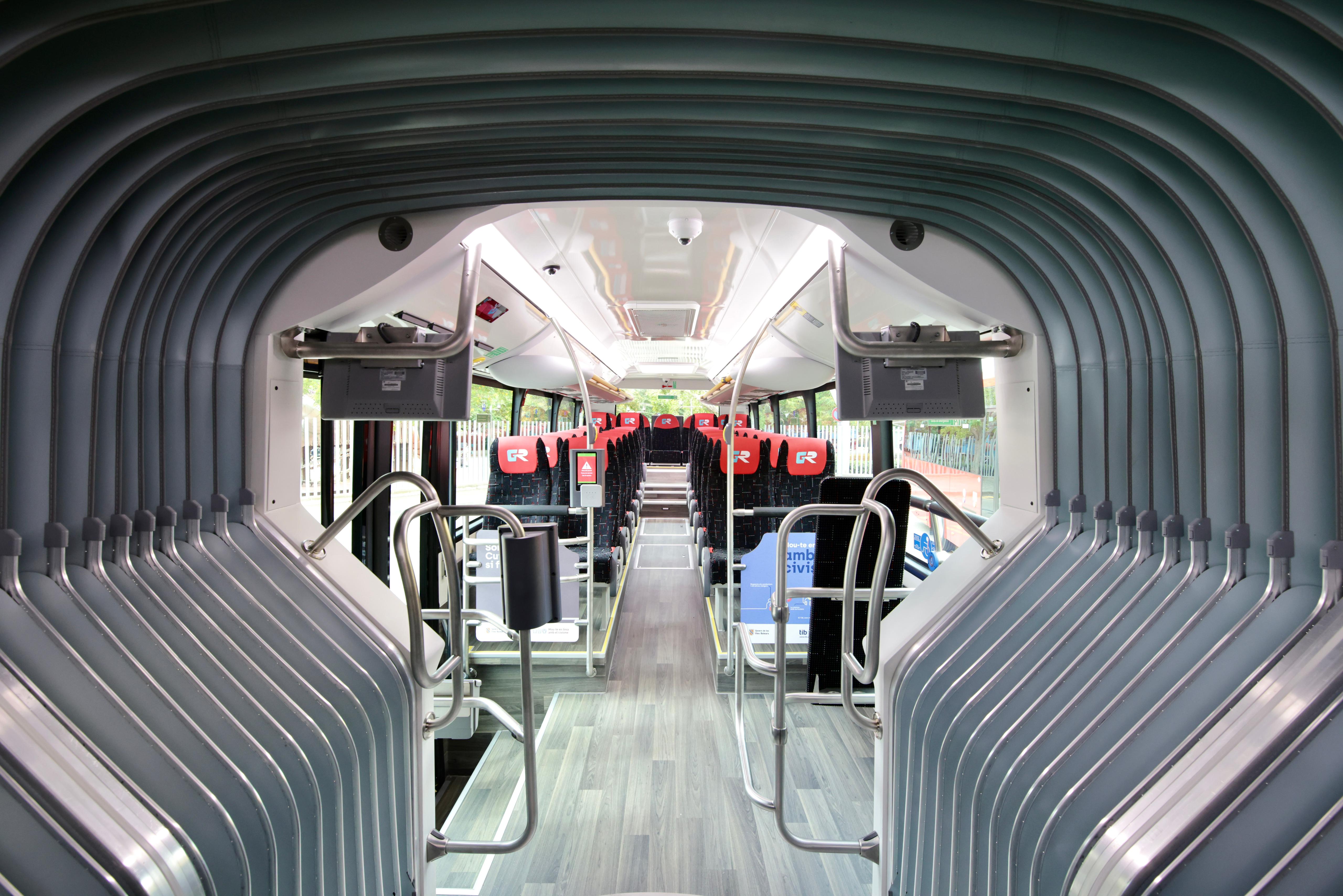Mallorca's intercity public transport has incorporated 10 new buses with up to 75 seats, the largest in the fleet, to improve the service, with more seats and reinforcements on several of the TIB network's main lines with the highest demand, in response to the increase in users in recent months.
The new vehicles are being added to the service this week –four units already started running yesterday– and enable the capacity of the lines to be increased by about 15%.
This improvement means not only having more seats on the buses, especially seats, but also an increase in the fleet to provide reinforcements for the daily operations of the TIB network. The addition of the 10 new buses is a continuation of the improvements introduced this year for the summer season and also for the last winter season.
Today, the Head of Mobility, Lorena del Valle, presented this improvement to the TIB network service after the concessionary companies received the final approval procedures from the Ministry in the last few days, which is essential for the registration of the new vehicles and their normal incorporation into the service.
The 10 new buses are 18-metre articulated buses, made by Scania, with Castrosua bodywork. Of these new units, eight buses are high-floor buses with a seating capacity of 75 seats per vehicle, almost 20 % more than the largest buses in the current TIB fleet, which have 63 seats.
These units will be incorporated into lines that are very popular with residents, such as the 401 Cala Millor - Palma line and the 302 Can Picafort - Alcúdia - Palma line, two of the lines with the highest number of users last year. The other two buses are semi low-floor buses, with a capacity of 57 seats each, and run on the A32 Can Picafort - Alcúdia - Palma and the 504 Tolleric - Palma lines.
This reinforcement of the fleet also makes it possible to continue to respond to the increase in demand in recent months. In the first four months of the year, from January to April, the increase was 42% compared to the same period last year, an increase of more than 1.9 million passengers –up to a total of nearly 6.5 million this year– between two periods in which free transport had already been introduced for users travelling with the Intermodal Card.
In order to meet the growing demand of the service, both in the last winter season and for the new reinforcement service launched this year for the summer season, the regional government has taken measures to improve, mainly focusing on increasing frequencies on the busiest lines.
For the summer season, this year the start of the reinforcement of the service was brought forward to 22 March: frequencies have been increased on a total of 24 bus lines, service has been resumed on 16 lines and a new line (131) has been added to the Serra de Tramuntana, between Santa Ponça, Banyalbufar and Granja de Esporles. During the winter season (1 November-21 March), the TIB network was reinforced with an increase of 27 bus lines compared to the previous winter.
Safety, sustainability and comfort
The 10 new buses are environmentally friendly compressed natural gas (CNG) vehicles, which contribute to the reduction of CO2 and polluting gases. Thus, Mallorca's intercity public transport service now has a fleet of 212 CNG buses and 18 electric buses, making the TIB network one of the most advanced in Europe in terms of environmental sustainability.
The new units, as well as the other vehicles in the fleet, incorporate many improvements and state-of-the-art technologies, such as interior user information screens, USB connectors for charging mobile devices and free wifi network. In addition, they also have lifts or double electric and manual ramps to facilitate access for wheelchairs and pushchairs.
On the other hand, to guarantee user safety, they have three security cameras with video recording; they are also equipped with intelligent cameras and vision sensors that alert the driver and prevent collisions with other vehicles, pedestrians or cyclists, lane departures, etc.; and they also have a system that controls the driver's blood alcohol level and doesn't allow the bus to start if it is above the permitted levels. The driver, for their part, is protected by vandal-proof safety screens.






